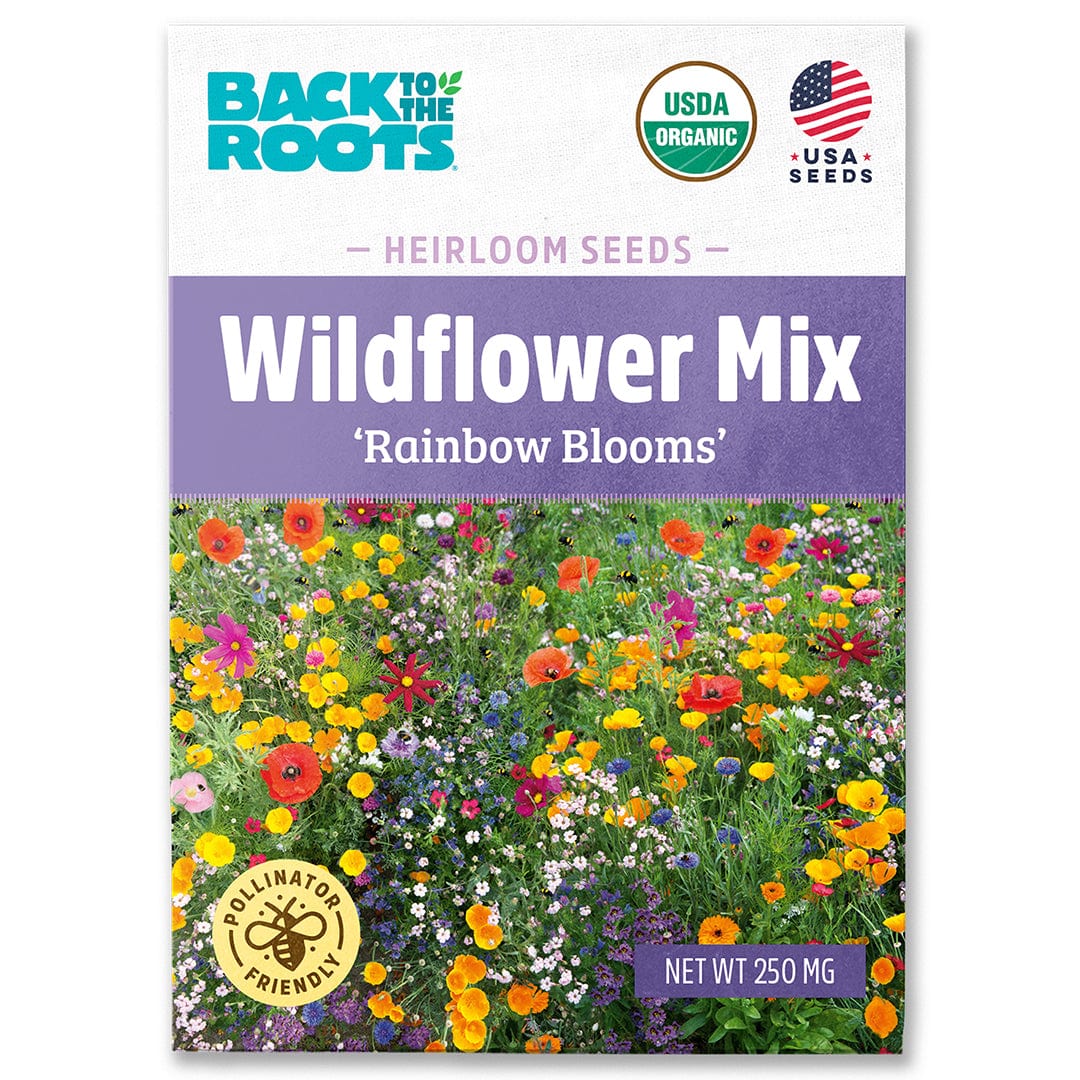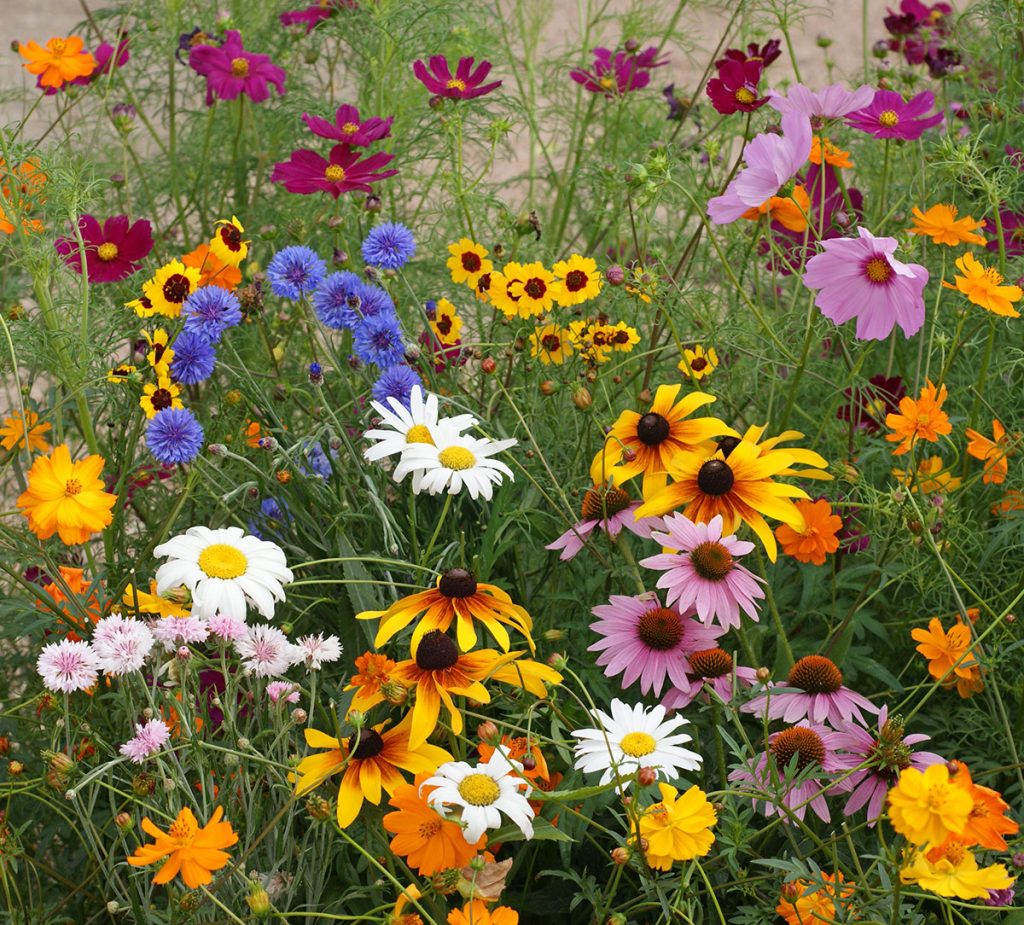Are you ready to bring vibrant colors and buzzing life to your garden? Planting wildflower seeds is one of the easiest and most rewarding ways to create a beautiful, natural space that attracts butterflies, bees, and birds.
Imagine stepping outside to a burst of bright blooms, all thanks to your own hands. Whether you have a large yard or just a small patch, you can start planting wildflowers today. In this guide, you’ll discover how to plant wildflower seeds steps to make sure your wildflower seeds grow strong and healthy.
Keep reading to learn how to transform your outdoor space into a lively, colorful haven!
Choosing The Right Wildflower Seeds
Choosing the right wildflower seeds is the first step to a beautiful garden. The right seeds grow well in your area. They attract bees, butterflies, and birds. They also need less water and care. Picking the best seeds means understanding what suits your space and goals.
Native Vs Non-native Species
Native wildflowers grow naturally in your region. They fit well with local soil and weather. Native plants support local wildlife better. Non-native species come from other places. Some non-natives can spread too fast and harm local plants. Choose native seeds for a healthy, balanced garden.
Annuals Or Perennials
Annual wildflowers bloom for one season. They grow, flower, and die in a year. Annuals give bright, quick color. Perennials live for many years. They return each spring without replanting. Perennials need more time to grow but last longer. Decide if you want fast blooms or lasting plants.
Seed Mixes And Single Varieties
Seed mixes contain several wildflower types. They create a colorful, varied garden. Mixes are easy for beginners and cover more ground. Single varieties focus on one type of flower. They help showcase a favorite plant or color. Both options work well. Choose based on your style and garden needs.

Credit: connectingtonature.ie
Selecting The Perfect Location
Choosing the right spot for planting wildflower seeds is very important. The location affects how well the flowers grow and bloom. Picking a place with the right conditions helps your wildflowers thrive. Consider sunlight, soil, and nearby plants to give your seeds the best start.
Sunlight Requirements
Wildflowers usually need plenty of sunlight. Most types grow best with at least six hours of direct sun daily. Some wildflowers can handle partial shade, but too much shade can stop growth. Check the seed packet for sunlight needs. Choose a sunny spot for healthy, bright blooms.
Soil Type And Drainage
Wildflowers prefer soil that drains well. Heavy clay or waterlogged soil can harm seeds. Sandy or loamy soil works best for most wildflowers. The soil should be loose to let roots spread easily. Avoid spots where water pools after rain. Good drainage helps keep seeds healthy and growing strong.
Avoiding Competing Plants
Remove grass, weeds, and other plants before planting. They compete for water, nutrients, and sunlight. Clear the area well to give your seeds space to grow. Avoid spots with invasive plants that spread quickly. A clean planting bed helps wildflower seeds take root and flourish.
Preparing The Soil
Preparing the soil is the first step to a successful wildflower garden. Healthy soil helps seeds grow strong roots and bloom beautifully. It needs to be ready to hold seeds and give them nutrients. Follow these simple steps to prepare your soil well.
Clearing Existing Vegetation
Remove all grass, weeds, and plants from the planting area. This stops competition for water and nutrients. Pull out roots and clear away dead plants. A clean area gives wildflower seeds space to grow.
Loosening And Amending Soil
Loosen the soil using a garden fork or tiller. Break up large clumps to improve air and water flow. Add compost or organic matter to enrich the soil. This helps seeds take root and grow faster.
Creating A Smooth Seedbed
Rake the soil surface to make it even and smooth. Remove stones and debris that can block seed contact. A flat seedbed ensures seeds stay in place and sprout evenly.
Planting Wildflower Seeds
Planting wildflower seeds is a simple way to add color and life to any outdoor space. It invites bees, butterflies, and birds, creating a lively garden. Knowing how and when to plant seeds helps them grow strong and healthy.
Best Time To Sow
Sow wildflower seeds in early spring or late fall. Soil should be cool but not frozen. This timing gives seeds a chance to settle and sprout with good weather. Avoid planting in hot summer months to prevent seed drying.
Seed Spreading Techniques
Spread seeds evenly by hand for a natural look. Mix seeds with sand to help scatter them widely. Lightly press seeds into the soil but do not cover them deeply. This keeps them close to sunlight and moisture.
Depth And Spacing Guidelines
Plant seeds at a shallow depth, about ¼ inch or less. Wildflower seeds need light to germinate well. Space seeds about 6 to 12 inches apart. Crowding seeds can limit growth and reduce blooms.
Watering And Maintenance
Watering and maintenance are key to growing healthy wildflowers. Proper care helps seeds sprout and plants thrive. This section explains how to water and maintain your wildflower patch for the best results.
Initial Watering Tips
Right after planting, water the seeds gently but deeply. Keep the soil moist, not soaked. Use a fine spray or watering can to avoid washing seeds away. Water daily if the weather is dry. Moist soil helps seeds germinate fast and strong.
Ongoing Care During Growth
Once seedlings appear, reduce watering to every few days. Water early in the morning or late afternoon. This helps prevent leaf diseases. Check soil moisture regularly. Let the top inch of soil dry before watering again. Avoid overwatering to stop root rot.
Weed Control Strategies
Weeds compete with wildflowers for water and nutrients. Remove weeds by hand when you see them. Pull them out gently to avoid disturbing roots. Mulch around plants to reduce weed growth. Keep the area clean to help wildflowers grow healthy and strong.
Encouraging Healthy Blooms
Encouraging healthy blooms is key to a beautiful wildflower garden. Proper care helps flowers grow strong and vibrant. It also extends the blooming season and supports local wildlife. Simple steps make a big difference in flower health.
Fertilization Options
Wildflowers usually need little fertilizer. Too much fertilizer can harm them. Use a balanced, slow-release fertilizer once or twice a season. Organic compost also works well. It improves soil health and provides gentle nutrients.
Managing Pests And Diseases
Watch for pests like aphids and beetles. Remove them by hand or use natural sprays. Avoid harsh chemicals to protect pollinators. Keep plants spaced well to reduce disease risks. Clear away dead leaves and debris regularly.
Deadheading And Seed Collection
Remove spent flowers to encourage new blooms. This process is called deadheading. It stops plants from using energy on seed production. Collect seeds from mature flowers for next season. Store seeds in a cool, dry place.
Troubleshooting Common Issues
Troubleshooting common issues with wildflower seeds helps improve your planting success. Many gardeners face similar problems but solving them is simple. Identifying the cause is the first step. Then, you can take steps to fix it and enjoy a beautiful wildflower garden.
Poor Germination Causes
Poor germination happens for many reasons. Seeds may be old or stored incorrectly. They lose their ability to sprout over time. Soil that is too dry or too wet stops seeds from growing. Planting seeds too deep or too shallow also causes issues. Lack of sunlight can slow or stop germination. Check seed age, soil moisture, and planting depth carefully.
Dealing With Wildlife
Birds and small animals often eat wildflower seeds. This reduces the number of sprouts in your garden. Use a light layer of mulch to protect seeds. Covering seeds with a fine net can keep animals away. Scare devices like reflective tape may help deter birds. Planting more seeds than needed also covers losses from wildlife.
Adjusting For Climate Challenges
Wildflower seeds react to different climates in various ways. Too much rain can cause seeds to rot. Dry, hot weather can dry out seeds before they grow. Choose seed types that fit your local climate for better results. Water seeds lightly during dry spells to keep soil moist. Plant seeds at the right time of year for your region.

Credit: backtotheroots.com
Design Ideas For Wildflower Gardens
Designing a wildflower garden lets you create a natural space full of life and color. Wildflowers grow freely, but a little planning helps your garden look its best. Simple design ideas can make your garden stand out and bloom beautifully through the seasons.
Think about colors, shapes, and the way plants grow together. This way, your garden will be lively and inviting for people and wildlife alike.
Creating Colorful Patterns
Use seeds of different colors to form patterns. Plant bright reds, yellows, and blues in groups. This makes colors pop and draws the eye around the garden.
Try planting in stripes, circles, or random clusters. Patterns add interest and make the garden feel planned, not wild.
Mixing Heights And Textures
Choose flowers of various heights. Tall flowers at the back and short ones in front create depth.
Mix fine leaves with broad ones. This contrast adds texture and makes the garden more appealing.
Attracting Pollinators
Pick flowers that attract bees, butterflies, and hummingbirds. These pollinators help plants grow and spread.
Include a variety of shapes and colors to welcome different pollinators. Your garden will become a lively, buzzing place.

Credit: sowrightseeds.com
Frequently Asked Questions
What Is The Best Time To Plant Wildflower Seeds?
The best time to plant wildflower seeds is early spring or fall. This timing allows seeds to germinate in optimal soil conditions and temperatures. Planting during these seasons encourages strong root growth and improves seedling survival rates.
How Deep Should I Plant Wildflower Seeds?
Plant wildflower seeds at a shallow depth, usually ¼ inch or less. Light helps many wildflower seeds germinate, so avoid burying them too deep. Gently press seeds into the soil surface for good seed-to-soil contact.
Do Wildflower Seeds Need Special Soil Preparation?
Wildflower seeds thrive in well-drained, moderately fertile soil. Remove weeds and loosen soil before planting. Avoid heavy fertilization, as wildflowers prefer low-nutrient soils. Proper soil prep increases seed germination and plant growth.
How Often Should I Water Wildflower Seeds After Planting?
Water wildflower seeds lightly and consistently until they germinate. Keep the soil moist but not waterlogged. After seedlings emerge, reduce watering frequency to encourage deep root growth.
Conclusion
Planting wildflower seeds brings beauty and life to any space. Choose a sunny spot with good soil. Spread seeds evenly and press gently into the ground. Water lightly to keep the soil moist. Watch as colorful flowers grow and attract bees and butterflies.
Enjoy the natural charm and simple joy wildflowers provide. Start small, be patient, and learn as you go. Your effort will create a lovely, vibrant garden soon.

